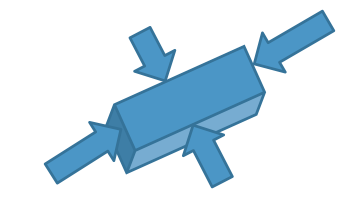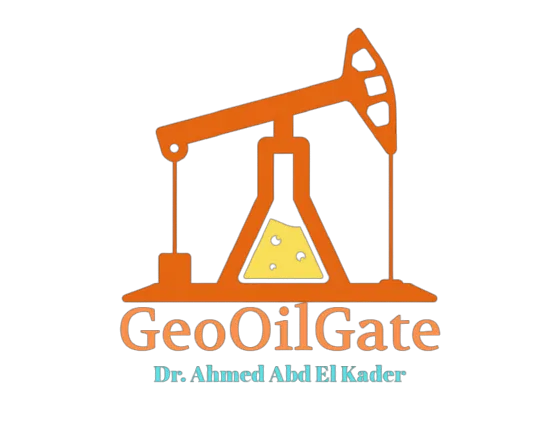Growth fault

Figure 1 Sketch showing a well-developed growth fault and accompanying structures.

Figure 2 Sketch showing evolution stages of three growth faults. The black arrow shows the direction of evolution.
Growth faults are syndepositional or synsedimentary extensional faults that initiate and evolve at the margins of continental plates. They extend parallel to passive margins that have high sediment supply. Their fault plane dips mostly toward the basin and has long-term continuous displacement. Figure 1 shows a growth fault with a concave upward fault plane that has high updip angle and flattened at its base into zone of detachment. This angle is continuously changing from nearly vertical in the up dip area to nearly horizontal in the down dip area.
Growth faults maturation is a long term process that takes millions of years with slip rate ranges between 0.2-1.2 millimeters per year. It starts when sedimentary sequences are deposited on top of each other above a thick evaporite layer (Figure 2). A growth fault is initiated when the evaporite layer can no longer support the overlying sequences. The thicker and denser portion applies much more pressure on the evaporite layer than the thin portion. As a result, a flow within the evaporite layer is initiated from high pressure areas toward low pressure areas causing growth ridges to form below the thin portion. Also, sinking zones are noticed among these ridges at areas where thicker and denser layers form (Figure 2).
Accompanied structures
Growth faults have two blocks. The upthrown block – the footwall – is landward of the fault plane and the downthrown block – the hanging wall – is basinward of the fault plane. Most deformations occur within the hanging wall side. The downthrown block slips downward and basinward relative to the upthrown block. This is caused due to the differential load of the overlying sediments and the high mobility of the lowermost low density layer.
Driving force
The main driving forces of the growth faults are the deferential sediments load and the low density layers – evaporites or over-pressured shale – that are formed during or right after the rifting process. Growth faults are located mainly within passive margin sedimentary wedges where tectonic forces have minimum or no effect. These passive margins receive millions of tons of sediments every year which are concentrated on the continental shelf below base level and above areas where the water velocity is no longer supporting the particles weight. This zone is called depositional center (depocenter for short) and has higher sediments load.Earthquakes arise and result ease of the force along the growth fault plane.
Importance of growth faults
Growth faults have great significance for stratigraphy, structural geology and the petroleum industry. They account for relative and eustatic sea level changes and accommodation space left for new sediments. Likewise, growth faults are connected directly to the subsidence in the coastal and continental shelf areas. Moreover, they explain lateral thickness variation of sedimentary sequences across these faults. The updip area on the downthrown block is the main target of oil and gas exploration because it has synthetic and antithetic faults and rollover anticlines. These are considered as structural traps preventing oil and gas from escaping
Deformation of rocks
Rock Deformation
- Large scale deformation of the Earth’s crust = plate tectonics
- Smaller scale deformation = structural geology
Deformation of rocks
- Folds and faults are geologic structures
Deformation – Stress vs. Strain
- Changes in volume or shape of a rock body = strain
Stress
- The force that acts on a rock unit to change its shape and/or its volume Causes strain or deformation.
Types of directed Stress include
CompressionAction of coincident oppositely directed forces acting towards each other

TensionAction of coincident oppositely directed forces acting away from each other

ShearAction of coincident oppositely directed forces acting parallel to each other across a surface

Figure 7 Differential stress
Strength
- Ability of an object to resist deformation
- Compressive
- Capacity of a material to withstand axially directed pushing forces – when the limit of compressive strength is reached, materials are crushed
- Tensile
- Measures the force required to pull something such as rope, wire, or a rock to the point where it breaks
Strain
- Any change in original shape or size of an object in response to stress acting on the object
Kinds of deformation
- Elastic vs Plastic
- Brittle vs Ductile




